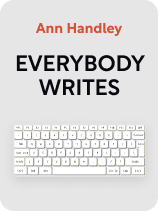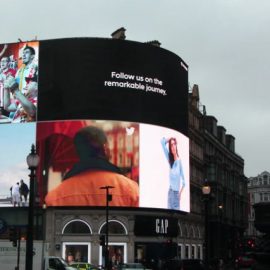

This article is an excerpt from the Shortform book guide to "Everybody Writes" by Ann Handley. Shortform has the world's best summaries and analyses of books you should be reading.
Like this article? Sign up for a free trial here.
What’s the “so what” factor? How can you, as a writer, advocate for your readers?
In Everybody Writes, Ann Handley discusses writing for your audience. She explains that your writing must help your reader by providing useful content and that it should build a strong relationship with your reader.
Keep reading to learn more about these two critical aspects of writing.
Usefulness to Your Audience
Handley points out that writing for your audience means that you help your reader in some way. Your content should be clear and specific, and it should let your audience know what problem of theirs you’re going to solve.
(Shortform note: In To Sell Is Human, Daniel Pink argues that helping your audience identify their problem or need is more important than solving it. He says that if they already know what their problem is, they can solve it themselves without buying your product, but, if you work with them to identify the problem, the audience will be open to using your solution. Applying this to Handley’s advice, consider writing content that attracts readers who have a specific problem rather than focusing solely on offering a solution.)
Before you start writing, establish the purpose of what you’re writing by identifying 1) what you’re trying to accomplish, 2) what the main idea is, and 3) why it matters to your audience (also known as the “so what?” factor).
For example, say you’re writing a product description for a new supplement your company is selling. What you’re trying to accomplish with this content is to convince people to buy the product. The main idea will be what the product is—say, a supplement for relieving muscle tension and pain. Why it matters to your audience, then, is that they can improve their overall health and mobility by using your product.
(Shortform note: You may recognize some of these tips from your high school English teacher’s instructions on how to write a good thesis statement. Many of the lessons you had on writing essays can be applied directly to your marketing writing as well. For example, as you may have learned in high school, you should make your main idea and “so what?” factor specific, assertive, and accurate.)
Connection With Your Audience
Writing for your audience must involve a strong connection. Your writing must feel like it’s written by a human who relates to and understands the audience. This will build a stronger relationship with your customer and make your brand seem more accessible.
(Shortform note: Human connection is an important facet of good communication in general, not just writing. In TED Talks, Chris Anderson makes some of the same recommendations as Handley, such as using stories, but he also adds that you can connect with your audience through humility and vulnerability. If what you’re saying seems egotistical or holier-than-thou, your audience will feel like you don’t care about them, and they’ll have no reason to listen to you.)
Handley explains that the best way to connect with your audience is to make your reader or customer the protagonist of your story. Your writing should center around them. The reader (not your boss or your editor) decides if your writing is good and if it accomplishes what you intended, so you need to advocate for your audience and write to their needs.
To do this, find out what your audience needs and wants, what’s important to them, and why they do what they do. Offer something in your writing that makes the reader feel represented. Returning to our supplement example, if you’re targeting people suffering from chronic pain, acknowledge ways pain interferes with their lives: They can’t pursue active hobbies like skiing or running, for instance. Show them that you want to help them become more active or reduce their pain.
(Shortform note: In Building a Storybrand, Donald Miller offers a detailed outline of how to create a story that stars your reader. Begin the story with the protagonist discovering a new desire or need—this can be based on what you learn from your audience, as Handley proposes. Next, your protagonist must come upon an obstacle to fulfilling that need, and your brand—also a character in the story—offers them assistance. End by providing a call to action—for example, to buy your product—and explain the negative consequences of not taking that action, along with the positive consequences of answering the call to action.)

———End of Preview———
Like what you just read? Read the rest of the world's best book summary and analysis of Ann Handley's "Everybody Writes" at Shortform.
Here's what you'll find in our full Everybody Writes summary:
- Why there is no such thing as a bad writer
- A guide to improving your writing and reaching your audience
- How to adapt your writing to different formats while maintaining your voice






